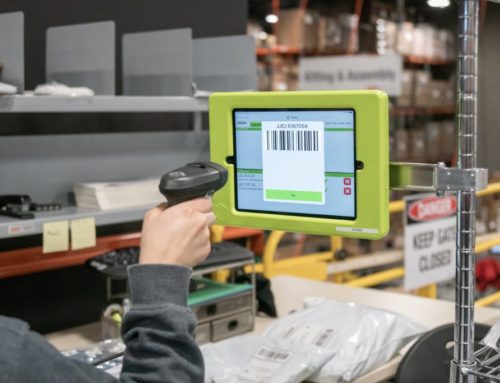While grouping or finding patterns in everyday life comes naturally to some, we all have a unique personal identity that makes us who we are and different than everyone else. In the eCommerce world, the same goes for your products.
While there are obvious differences between a blue and orange shirt, telling the difference between two red shirts is a little harder to tell at first. Without investigating the sizes and design particularities, it can easily become a consuming mess.
When it comes to inventory management, eyeballing just doesn’t cut it. The more products and variations you have the more confusing it becomes. Organizing inventory using stock-keeping units (SKUs) based on characteristics and key variations makes world of difference. As a result, let’s dive into some specifics and best practices.
What is SKU tracking?
SKU tracking is a fundamental part of managing a comprehensive, clear, and smart eCommerce inventory strategy. It involves assigning a unique alphanumerical code to a product used to track variations of the same product that are in or out of stock at any given point in time. Not only does SKU tracking cut the time spent on inventory planning and counting, but it also makes managing all the products you have much easier in the long run. This enables you to seamlessly grow your distribution and logistics planning while expanding your strategy and business.
How to effectively use and track SKUs
Having the ability to monitor inventory at every stage of the retail fulfillment process is crucial in creating a visible and cohesive inventory management strategy that all parties understand and can follow. The following examples highlight how SKU tracking helps create a cohesive flow through all touchpoints of the logistical process.
Tracking orders delivered to end customers
Depending on the carrier delivering the package, you can often use SKU tracking to identify and monitor items in transit to the end customer. Informing your customers and merchants of precisely what is in transit provides a complete view of what items are where in the supply chain, which helps you better serve customer needs.
Tracking SKUs and items in transit
Running an eCommerce business requires detailed tracking of finished goods from a manufacturer or suppliers facility all the way to an online retailers warehouse or distribution center. A concise and accurate view of the supply chain pipeline and the SKUs in transit help illuminate when more inventory than you expected, is required. Given product drops and deliveries are designed to be timely and efficient, detailed SKU tracking of items in transit is a must-have.
Tracking SKUs in warehouses
Optimizing warehouse inventory management tracking systems can greatly enhance fulfillment performance and deliver insights on areas to improve. When it comes to activities like ordering, restocking, and storing, inventory forecasting is crucial in meeting an onslaught of customer demands. ECommerce automation and digital warehouse tools like inventory scanners help organize a variety of SKUs throughout your warehouse, enabling faster fulfillment and making it much easier for your picking team to locate the right items to fulfill orders. This efficient, cost-effective, and accurate monitoring of SKUs through Custom Inventory Management Software helps forecast future demand while actively monitoring consumer behavior and flow of products at any point along the supply chain.
Why is SKU tracking essential for eCommerce business?
While enhanced SKU tracking can assist with a number of tasks, it also provides valuable data and insights into profitability levels, sales trends, and future demand. Dissecting and using this data makes the inventory management process more efficient so that you and your team can make the most calculated decisions when it comes to replenishing inventory.
Avoiding dead stock requires measuring SKU performance to identify with products are slow-selling and at the risk of becoming obsolete. This data allows you to eliminate slower-moving items so that you don’t order more that end up piling up. It is equally important that SKUs are not overstocked, but kept at a reasonable threshold to prevent stockouts. With a proper SKU tracking system, you can decide when and how to best replenish your inventory.
How to improve your SKU tracking efforts
If you already manage an eCommerce business, you likely have a system in place that tracks SKU levels. That said, understanding how to enhance and optimize this process is vital in scaling your business and taking sales to new heights or expanding into new markets and product lines. The following tips should help you in your SKU tracking efforts.
Set up standardized methods
Establishing a cohesive and easy-to-follow framework on how SKUs are labeled and counted is imperative to a seamless operation. Standardizing SKU codes helps create an easy structure for both internal teams and third-party partners to work with and understand. That way, everyone from manufacturers to distributors to your fulfillment partners is on the same page delivering accurate SKU data at every point along the supply chain. As a general rule of thumb, an ideal SKU code should be short, simple, and distinguishable (between 8 and 12 characters).
Don’t use confusing characters
While this might be a no-brainer, the goal is to simplify the process by avoiding confusing characters. For example, using the number 0 and the letter O can cause a world of confusion and throw off the SKU data. Also, avoid using spaces and special characters that can be difficult to understand.
Group and sort similar products
While each SKU is individual and unique, it is never a bad idea to group similar products based on size and color on your eCommerce website. This simplifies the process for customers who are looking for different variations of virtually the same product. This often encourages sales and a more accurate catalog for the website. If you offer the same shoes in different sizes and colors, a shopper can browse exactly which options are available in different variations.
How Drive Fulfillment makes inventory and SKU counting easy
Drive Fulfillment simplifies the SKU tracking and inventory management process for both partners and end customers through a diverse digital inventory system that scans and tracks items at every point along the supply chain.
The Driveline dashboard helps to easily and quickly comprehend SKU performance and a real-time view of all your inventory. This makes managing and updating inventory simple. Forecasting demand based on SKU performance has never been easier with the help of a competent 3PL partner like Drive Fulfillment. With years of supply chain and logistical experience, innovative warehouse management software, and a skilled group of staff, the days of constantly worrying about SKU’s are over. Get in touch for more information or to schedule a tour of our Utah-based Drive Fulfillment Center today.






